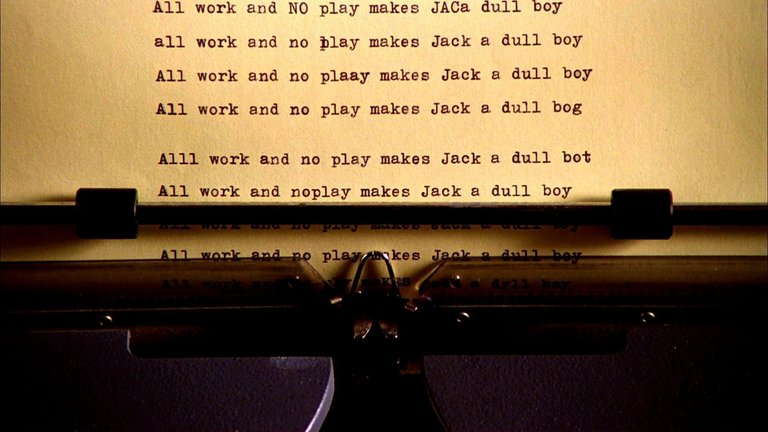Guidelines for the formatting of citations and references in scientific works
So in this post we'll deal with a very important, although often overlooked aspect of scientific writing / publishing, which is: formatting of citations and references.
Yeah, boring. And very, very toilsome.

Boring, maybe, but only until we understand that citations today literally can determine whether a scientist will be able to feed his family or not.

And no, this is not an exaggeration.
[And yes, this image was used using AI. Notice just how weird the plate is. Definitely still a lot of room for improvement]
Ok, let's say you wrote a good project. You managed to get your project properly funded (congratulations, that's no small feat!). You conducted your research successfully, at the cost of blood, sweat and tears. And then you finally have your precious results on paper. Is that all? Absolutely not!! One critically important aspect of the research activity is to make your precious discoveries known to the other scientists and (hopefully) to society as a whole. Yes, scientific publication... there's no way around it.
And speaking of preparing a scientific text for publication... without a doubt, citations and references formatting is the most complicated and laborious aspect of this whole process.
With this in mind, this post aims to provide an example of a reasonable set of rules for the formatting of citations and references for scientific publications in the context of Hive-Science.
Very importantly, these formatting rules will be required for the research projects published in the Hive-Science community by students.
Before we move on, in case you missed any of them, here's a list of the previous posts linked to the Hive-Science project:
— Introduction to Hive-Science: https://peakd.com/@hassemer/introducing-hive-science
— Hive-Science to embrace the Pevo project: https://peakd.com/@hassemer/hive-science-will-embrace-pevo
— So... why are citations relevant?
People starting to get acquainted with academia and its mannerisms might overlook the importance of citations. Why bother?, one might think.
Well, citations are important mainly because of two things: to base one's research and to give credit where it's due.
Let's just say that, if you don't know well what is already known about the subject you would like to do research into... what would be the odds that you actually manage to advance human knowledge? Slim at best, almost certainly none if we're realistic. This aspect alone ought to suffice to illustrate the importance of a robust literature review, which must in turn result in appropriate citation practices. Actually that's the foundation of any good research.
If that alone were not justification enough, there's also the matter of a rather complicated word, which is particularly painful to a lot of scientists: scientometrics. People outside academia tend to ignore how scientists are evaluated, and how destructive the [sciento]metrics currently in use are to Science itself.
[in an attempt] To make it short: scientists nowadays get doors closed on them (sadly a very frequent occurrence...) or doors opened for them (a rarer happening!) based on metrics such as the impact factor and the h-index, which are essentially (directly or indirectly) a measure of how many citations their works receive. Therefore, citations have become a tool of career advancement, and consequently of power, and as you all know... power tends to corrupt. At any rate, this goes to show that citations are hugely impactful to scientists themselves, which are real people, in flesh and bone like all of us, and should therefore be well understood and used properly and in an ethical manner.
— Adequate citation practices
It is of absolute importance that all works used to base your work are duly cited in your text. This is particularly important for the "Introduction" section, where you present your readership to the state-of-the-art relevant to your work; the "Material & Methods" section, where the methodology followed must be explained in detail to the readers, including the citation of the works that based the choice of that methodology; and the "Discussion" section, where your results are critically discussed in light of the state-of-the-art, i.e., what is / was already known in the literature.
Works that were not read / consulted should NOT be cited. No exceptions! Even if they were cited in works that you read and do choose to cite.
Works that are not relevant to your research should NOT be cited. Even if a good friend of yours is among the authors of that work, ok? Let's strive to keep scientific literature ethical and as much garbage-free as possible.
If the work being cited has a DOI [Digital Object Identifier], make sure to always give it! Irrespective of it being an article, a book, a chapter in an edited book, or some other publication type.
— Citation of websites and webpages
When citing websites or webpages, you don't need to include them in the References list, but you must give the date the website / webpage was accessed. Follow this structure:
"Plant names' author citations are in conformity with the International Plant Names Index [https://www.ipni.org - accessed 10 April 2024]."
"The nomenclature of Stellaria intermedia F.H.Wigg. still needs to be rectified on the International Plant Names Index website [https://www.ipni.org/n/430522-1 - accessed 10 April 2024]."
— Formatting of citations and references
Ok here we go, the most tedious part. Buckle up!
When preparing your References section, you must provide full citations to all works cited in the text. Author names for each reference should be given in the exact order they appear in the work being cited.
References should be listed alphabetically based on the first author's surname. If works from different [first] authors with the same surname are cited, you should sort these works alphabetically based on the initial of the [first] author's first name. If more than one work from the same [first] author is cited, you must list them chronologically.
= How to make in-text citations
"According to Tuler (2019), the solution proposed by Peña & Bro-Jørgensen (2016) is adequate to deal with the dilemma presented by de Souza et al. (2013)."
[here are exemplified rules for in-text citations of works with only one author, two authors, and three or more authors, respectively]
— Formatting of references:
= Standard articles:
Author, A., Author, B.C., Author, D.-E.F. (YEAR) Title of the paper. Title of the Journal in Full VOLUME: x–y. DOI: ######
Arbuckle, J.Q., de Jussieu, A.-L., van der Werff, A., de Lacerda, C.F.W., von Schlechtendal, D.F.L. (1987) Super thorough treatment of unexisting things. Journal of Advanced Illusionism 71: 145-199. DOI: https://doi.org/10.19999/t47tr674tr67
= Books:
Author, A., Author, B.C., Author, D.E.F., Author, Y.-Z. (YEAR) Title of the Book. Publisher Name, City. xyz pp. ISBN: ########. DOI: ######
Buzzati, D. (1940) Il deserto dei Tartari. Rizzoli, Milan.
[the book's ISBN (International Standard Book Number) and number of pages may optionally be given]
= Chapters in edited books:
Author, A., Author, B.C. (YEAR) Title of the chapter. Pp. x–y in: Editor, A., Editor, B.C., Editor, Z. (eds.), Title of the Book, VOLUME [if applicable]. Publisher Name, City. ISBN: ########. DOI: ######
Moroni, P., Hassemer, G. (2018) Plantago L. Pp. 392–423 in: Antón, A.M.R., Rúgolo, Z.E., Zuloaga, F.O. (eds.), Flora Argentina, vol. 20(1). Editorial Trama, Buenos Aires. ISBN: 978-987-45957-9-9.
[the edited book's ISBN (International Standard Book Number) may optionally be given; in the cases where both the book and the specific chapter being cited have unique DOIs, make sure to give the DOI that pertains to the chapter, not the whole book]
= Articles published on Hive by a pseudonymous author:
@pharesim (2024) What is a Wiki, and why does Hive need one of its own? Hive publication: /@pharesim/what-is-a-wiki-and-why-does-hive-need-one-of-its-own
= Articles published on Hive with a list of authors informed in the publication itself:
Author, A., Author, B.C., Author, D.E.F., Author, Y.-Z. (YEAR) Title of the publication. Hive publication: /@account-name/title-of-the-publication
= Other publications:
Nakamoto, S. (2008) Bitcoin: a peer-to-peer electronic cash system. Available at: https://bitcoin.org/bitcoin.pdf [accessed 10 April 2024].
[if the publication has a DOI, give it instead of the web address and date of access]
= Websites / webpages
These should be cited in the text (see above), and not included in the References list.
— Are those formatting rules mandatory for publications in the Hive-Science community or in the future Pevo platform?
Absolutely not! [unless you are a student publishing a research project in the context of one of my university courses, in which case these formatting rules are required!]. The whole point of the "guidelines" presented here is to serve as an example.
However, even if you choose to follow some other set of rules for the formatting of citations and references, there must be some rules that are followed, and they must be consistently applied. This is very important for scientific texts, else your work becomes inconsistent, unnecessarily harder to follow and to make use of, and gets a very undesirable sloppy appearance. Anyone with experience working as editor for a scientific journal will know that sometimes meritorious research results are sloppily turned into messy, untoward manuscripts, tarnishing the authors' reputation, and leading to much increased difficulty to get the work published. Any sensible scientist will avoid that at all costs.
So this post is coming to its end. My idea is to maybe update this post in the future, should improvements to the proposed guidelines become desirable / warranted at some point. Especially considering the feedback received from fellow scientists. Please let us hear from you, in case you have ideas or criticism to share! And maybe join the Pevo crew too!
Stay tuned for updates on the Pevo platform for scientific publishing! Slowly but steadily, @pharesim, @gwajnberg and I are working to make DeSci a reality on Hive!
Congratulations @hassemer! You have completed the following achievement on the Hive blockchain And have been rewarded with New badge(s)
Your next target is to reach 600 upvotes.
You can view your badges on your board and compare yourself to others in the Ranking
If you no longer want to receive notifications, reply to this comment with the word
STOPHello hassemer!
It's nice to let you know that your article will take 4th place.
Your post is among 15 Best articles voted 7 days ago by the @hive-lu | King Lucoin Curator by keithtaylor
You receive 🎖 1.2 unique LUBEST tokens as a reward. You can support Lu world and your curator, then he and you will receive 10x more of the winning token. There is a buyout offer waiting for him on the stock exchange. All you need to do is reblog Daily Report 267 with your winnings.
Buy Lu on the Hive-Engine exchange | World of Lu created by szejq
STOPor to resume write a wordSTART